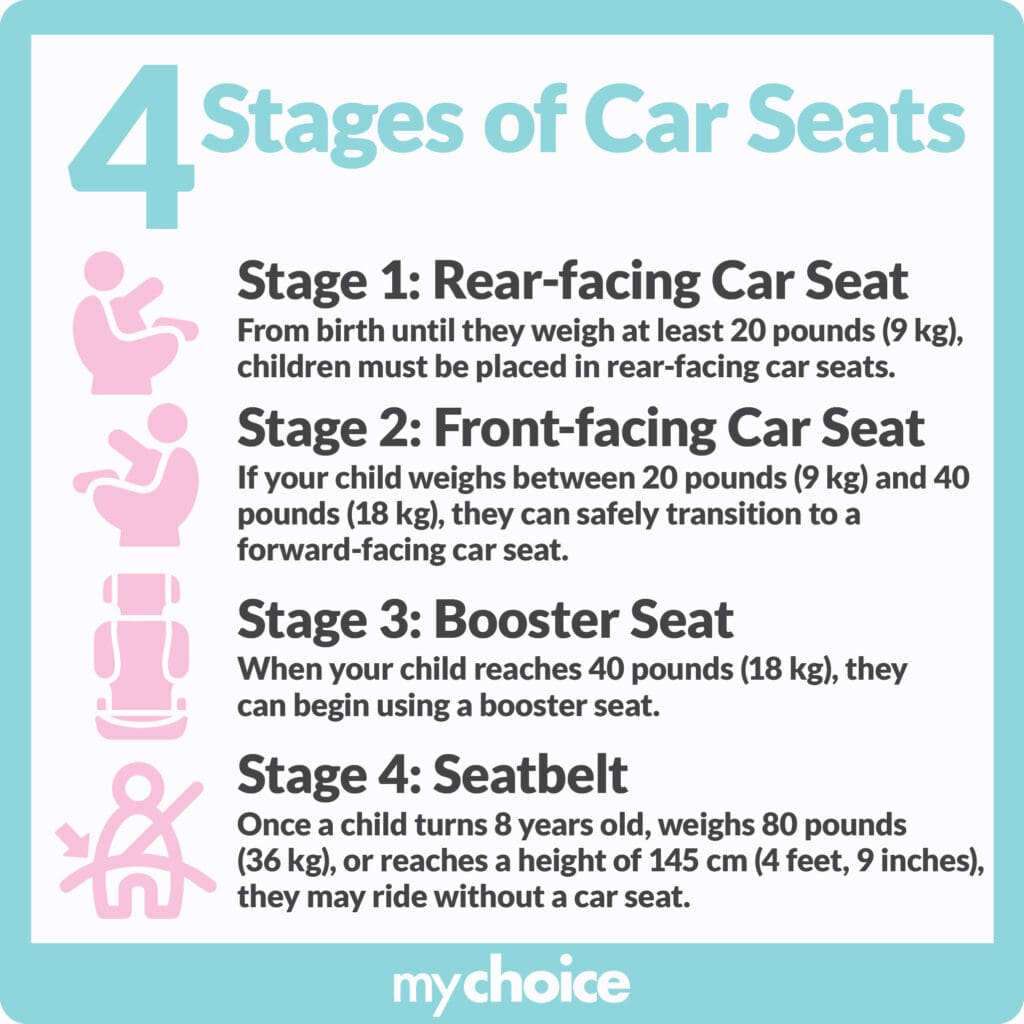As parents or guardians of young children, safety is often at the forefront of our minds – and this extends to their security on the road as our passengers. In Ontario, this call to safety is supported by the government, and a failure to comply with the rules and regulations can result in a few fines and fees. Here’s a quick overview of what you need to know:
But there is so much more to car seat laws in Ontario. Let’s dive in a little deeper.
Car Seat Safety in Ontario
Laws about car seat safety in Ontario are detailed in the Highway Traffic Act and Seat Belt Assemblies under Reg. 613. In it, you’ll discover that it’s considered a civic duty to ensure young children’s safety while they ride in your car, particularly if they’re under the age of 8.
On top of this, caregivers and parents will need several different kinds of car seats to accommodate their child’s growth and development over time.
Four Stages of Car Seats
Different car seats are built with different life stages in mind. Like we mentioned earlier, Ontario’s local laws require you to update your young one’s sitting situation periodically. Here’s a breakdown of the different “stages” of car seats and when it’s appropriate to use them.

Why Car Seat Safety Matters
Car seat safety is crucial because it significantly reduces the risk of injury or death in the event of a car accident. Children are more vulnerable than adults due to their size and developing bodies, which makes it essential to use appropriate car seats that are designed to protect them at each stage of their growth.
Properly installed car seats can prevent serious injuries by absorbing impact and keeping children securely restrained, minimizing the movement of their heads, necks, and spines. This is especially important in collisions, where the forces involved can be extremely dangerous for young passengers.
Prioritizing car seat safety is not just a legal obligation but a moral one, ensuring that your child is as safe as possible on the road.
Consequences of Non-Compliance
Failing to comply with Ontario’s car seat laws can lead to serious consequences. If a driver is caught not following the rules, they may face fines, demerit points, and even more severe penalties if non-compliance results in injury or death.
The immediate financial costs of a ticket can be burdensome, but the long-term impact on a driver’s record and insurance premiums can be even more significant. More importantly, non-compliance puts a child’s life at risk. Without the proper restraints, a child is much more likely to suffer from severe injuries in a crash, which can lead to lifelong disabilities or fatalities.
It’s crucial to understand that the law is in place to protect children, and adhering to it is essential for their safety.
Choosing The Right Car Seat
Selecting the right car seat for your child is one of the most important decisions you’ll make as a parent or caregiver. When choosing a car seat, consider your child’s age, weight, and height, as these factors will determine which type of seat is appropriate.
Always check the manufacturer’s recommendations and ensure the seat meets Canadian safety standards, which are indicated by a National Safety Mark label. Additionally, think about the features that best suit your needs, such as ease of installation, comfort, and adjustability.
It’s also a good idea to read reviews and seek advice from other parents or certified child passenger safety technicians. Remember that as your child grows, their car seat needs will change, so be prepared to upgrade when necessary to keep them safe and secure. In this case, your auto insurance might even help you pay for a new one.
Key Advice from MyChoice
- Car seats in Canada have expiration dates, so note that if you’re purchasing a barely used second hand seat
- If your car seat was made before 2012, it may not be up to standard
- Only use car seats that have never been in a collision








